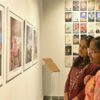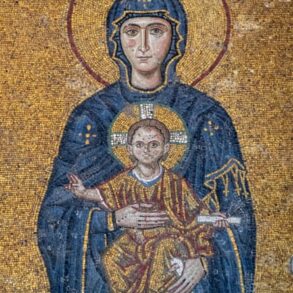
Throughout the Dutch Republic, there were many women artists working alongside men. They produced work for the European art market and contributed to a period in Dutch history often viewed as the Golden Age for Art. There are numerous works of art that we know were done by women painters. However, there are few surviving records on Dutch women artists and a lot of their artwork gets misattributed, often being credited to a male artist. Let’s see how institutions represent art when the authorship is uncertain.
Did Eighteenth-Century Biographers Write About Dutch Women Artists?

The documentation written by eighteenth-century biographers had a significant effect on how women artists were remembered. Arnold Houbraken (1660 – 1719), Jacob Campo Weyerman (1677 – 1747) and Johan van Gool (1685 – 1763) were all heavily influential regarding the memory of artists who were working in the Dutch Republic. They recorded the lives of painters working in various cities throughout the Netherlands. Their opinions and the way they wrote affected how artists are remembered in history.
Only a handful of women’s lives were documented by these biographers, such as Rachel Ruysch (1664 – 1750) and Maria van Oosterwijck (1630 – 1693). The texts published by Houbraken, Weyerman, and Van Gool were used by many historians during the nineteenth century and were often referenced when learning about seventeenth-century artists. This would have directly affected how female artists are remembered in the decades following the Dutch Golden Age.
Houbraken documents Maria van Oosterwijck’s work in a great amount of detail. He praises her artistic ability and documents the various Royal Courts that purchased her work. Weyerman also records van Oosterwijck’s career in a positive light. Her work often has the theme of vanitas and religious connotations. Additionally, she came from a family of ministers and never married, which could be why both Houbraken and Weyerman see van Oosterwijck as a female figure who deserves to be written about, as she spent her life completely devoted to her art and religion.
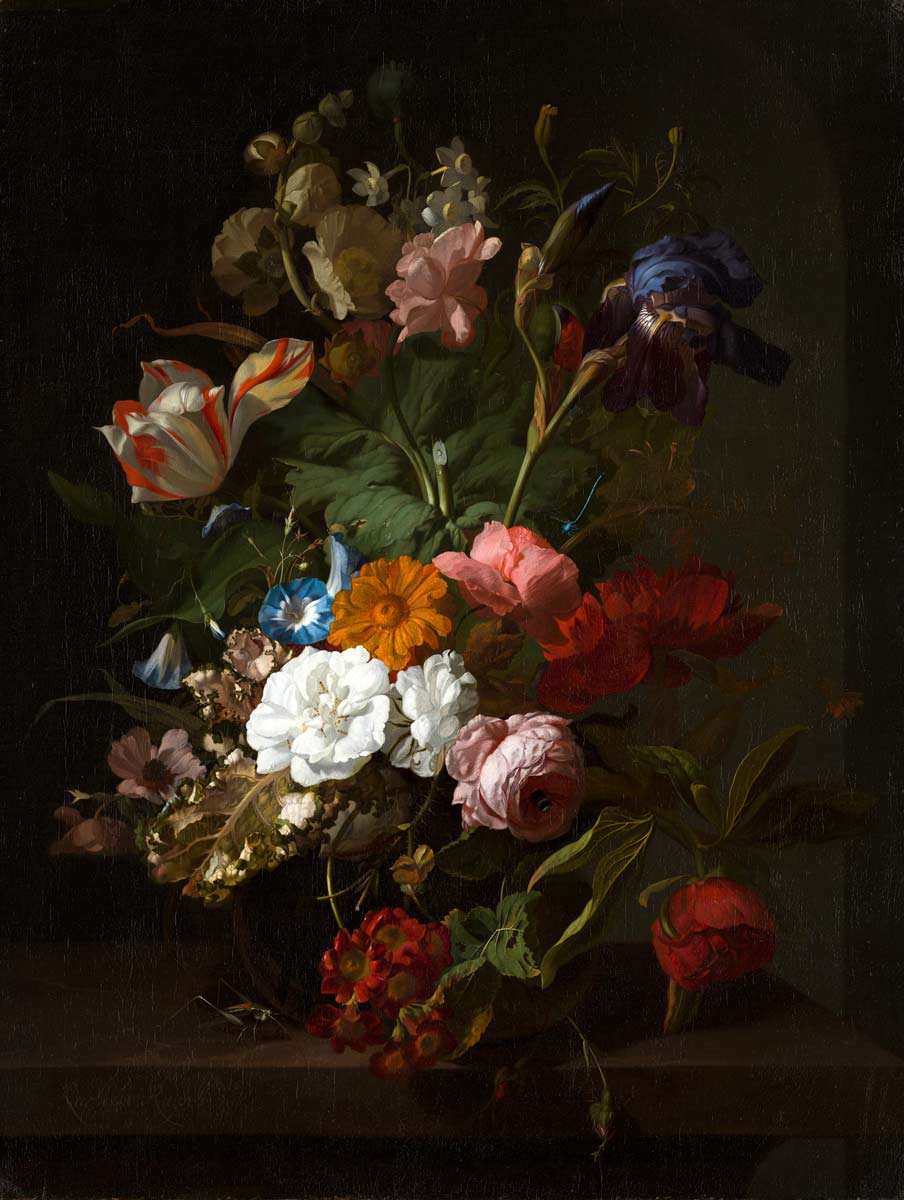
Get the latest articles delivered to your inbox
Sign up to our Free Weekly Newsletter
Moreover, Houbraken only wrote about Rachel Ruysch’s life when writing about her grandfather Pieter Post (1608 – 1669) and his brother Frans Post (1612 – 1680), both well-known architects. Van Gool only mentions Ruysch’s career when writing about her husband, Juriaen Pool (1665 – 1745) who was arguably far less successful as a painter. During her lifetime, Ruysch was more successful, commercially, than famed artists like Rembrandt, raising the question of why Houbraken and van Gool felt the need to mention Ruysch’s male relatives when documenting her career. Considering this happened to one of the more successful female still life painters from this era, the lack of detail about the lives of women artists who weren’t as well-known is not surprising.
The minimal information written about female artists throughout history has directly affected the misattribution of paintings to male artists. This continues to influence how artworks are viewed in the 21st century. Documents like the ones written by Houbraken, Weyerman, and van Gool do give a modern reader an understanding of the opinions people had towards female artists during the 17th and 18th century. However, it is important to remember that these biographers’ personal opinions impacted their writings about artists, meaning they may have been biased toward painters they preferred, and therefore wrote about them more favorably. Therefore, the accuracy of the information that was recorded needs to be questioned since it’s not fully reliable.
Did Margareta Haverman Paint It?

The long-term effect these biographers had on how artists are remembered is evident. For example, Margareta Haverman (1693 – after 1739) was a Dutch painter whose reputation was negatively impacted and therefore authorship of her work is often questioned. Born in Breda, Haverman received training from Jan van Huijsum (1682 – 1749) who was one of the most well-respected floral, still life painters working in the Dutch Republic. The French newspaper Le Mercure confirmed her training and announced her admission to the Académie Royale de Peinture et de Sculpture in Paris in 1722. However, after her admission, Haverman’s name is never mentioned in the institutions’ records.
This has led to rumors over why there is no documentation of her working in Paris. One rumor was that Haverman claimed her teachers’ work as her own. Another interpretation of van Gool’s writings about van Huysum claims that he had a turbulent relationship with Haverman. He documented that she tended to copy her teacher’s work causing conflict between them. The rumor that she was expelled from the Academy for claiming a van Huysum painting as her own appears in an auction catalog from 1757. Van Gool’s anecdote may have been used to support this information.

Unfortunately, the implication that the work Haverman created was stolen from her teacher resulted in many people changing the authorship of her paintings. Because of this, there are now only two known works by Haverman. Another reason why the true artist of several paintings is in question is due to Haverman and van Huysum’s similar artistic styles. However, if he was in fact her teacher then this should not be surprising. This, in addition to the rumor, has led to many paintings being attributed to van Huijsum incorrectly. It is also possible that Haverman stopped creating work once she started her own family. She got married in 1721, after which she disappeared from records. This was a common occurrence for female artists. Due to the unreliable information surrounding Haverman’s life, present-day art historians have difficulty working out which paintings were completed by her.
Did Francina Margaretha van Huysum Paint It?

Another frequent issue when it comes to identifying artworks happens when the credit is given to the father, brother, or other male family member of the female painter. Francina Margaretha van Huysum (1707 – 1780) is an example of a woman artist whose work has been arguably misattributed. As the daughter of Jan van Huysum, it is most likely he taught his daughter how to paint, as it was not uncommon for fathers who were artists to do so.
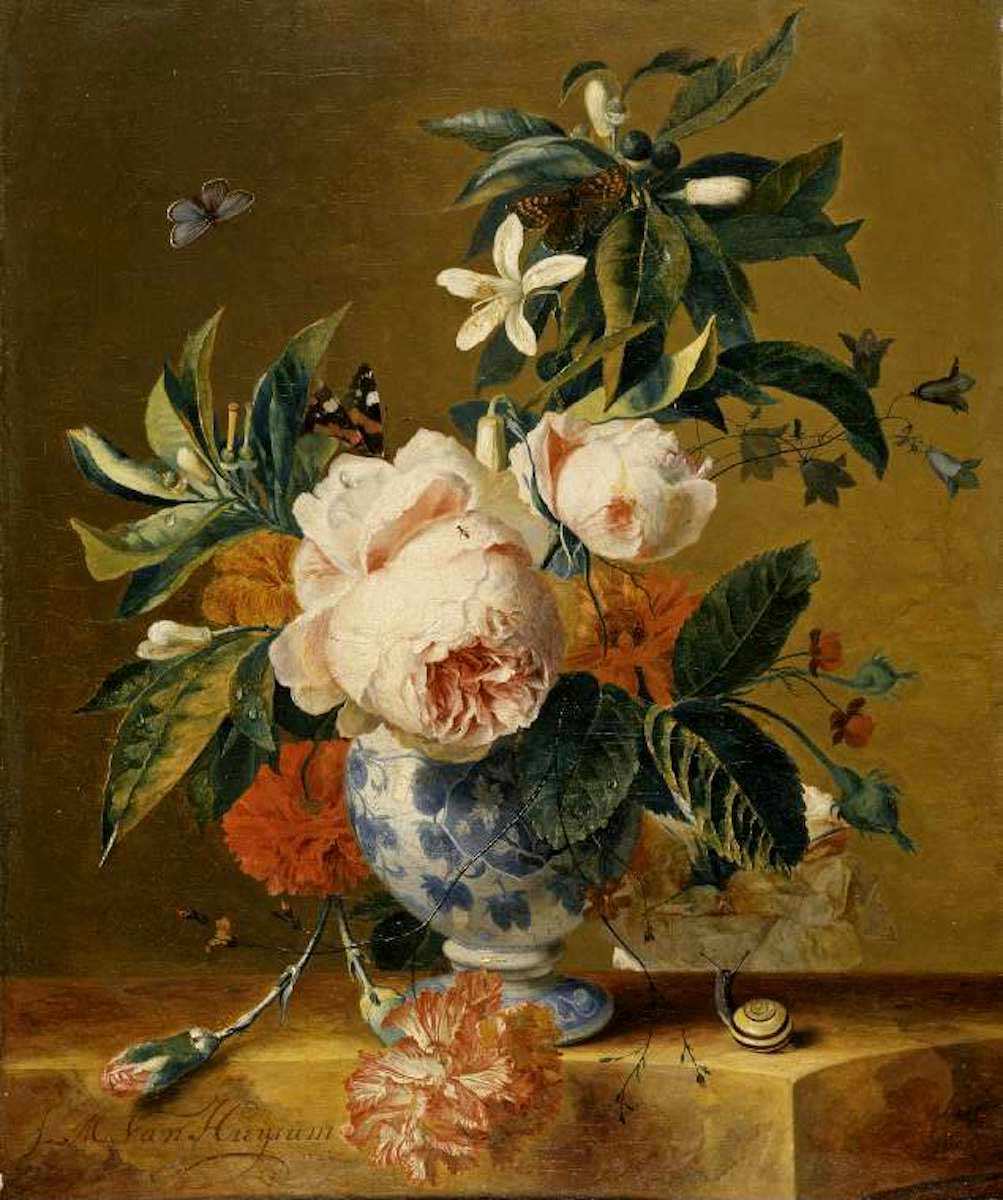
Art historian Sam Segal believes there are four paintings that may have been falsely attributed to her half-uncle Michiel van Huysum (1703 – 1777). Two of these paintings can be found in The Fitzwilliam Museum in Cambridge and the other two can be found in the Dulwich Picture Gallery in London. It is suggested that Michiel van Huysum painted one of the pairs and Francina Margartha copied him. The main problem is that these artists have similar initials, it appears that on occasion they both signed their works with M van Huijsum. At one point in time, it was thought that Jan van Huysum painted all four works, as the M was covered with Jan.
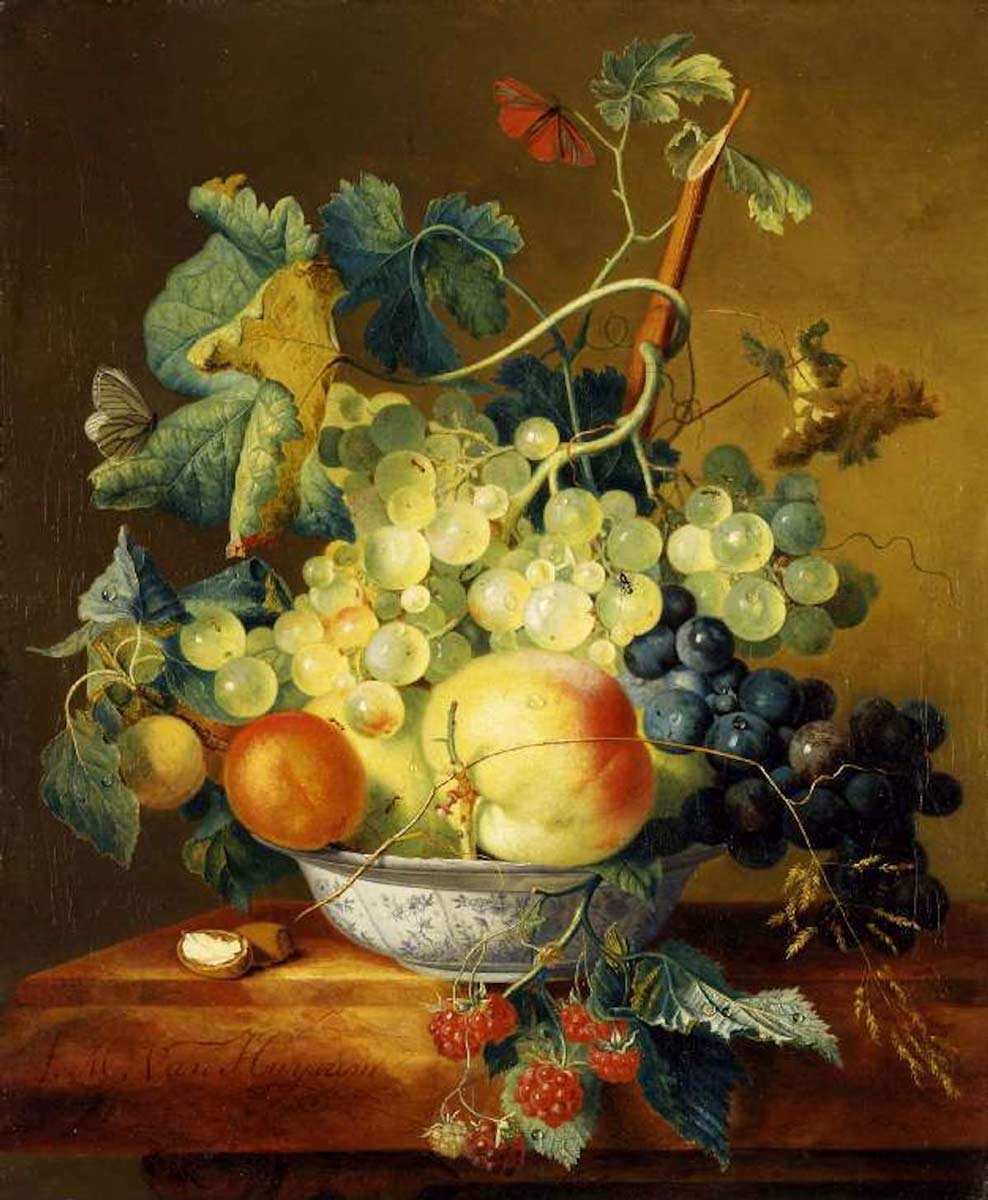
We do not know for certain but there is a chance the original signature said F.M van Huijsum, supporting Segal’s opinion that Francina Margartha completed all four paintings. Dulwich Picture Gallery still acknowledges Michiel van Huysum as the artist with their two versions, however, they do recognize the authorship may be incorrect and that it needs to be further explored. On the other hand, The Fitzwilliam Museum does not mention any artist other than Michiel van Huijsum, showing how the lack of information on female artists affects how institutions display and attribute artworks.
Both Francina Margaretha and Haverman are artists whose misattribution has been recognized and brought to the public’s attention. Unfortunately, there is no way to prove they definitely completed the paintings that have been mentioned. Francina Margaretha and Haverman are only two examples of something that was most likely a common occurrence for female artists working in the Dutch Republic.
Dutch Women Artists and Attribution

The uncertainty around paintings by female artists has caused them to be overshadowed by male artists. One of the factors is the lack of documentation about certain women artists when it comes to confirming their oeuvre. Another factor of misattribution could be caused by the fact that women artists were trained by their fathers in order to assist with the family business. Nonetheless, there are times when a female artist’s work is misattributed to someone who was not their teacher or relative. Judith Leyster (1606 – 1660) had a successful career during her lifetime, but after her death, due to their similar styles, Fran Hals (c.1582 – 1666) was credited for making her entire oeuvre. Once she was rediscovered in the nineteenth century, historians started to investigate paintings originally thought to be by Hals that actually have Leyster’s signature.
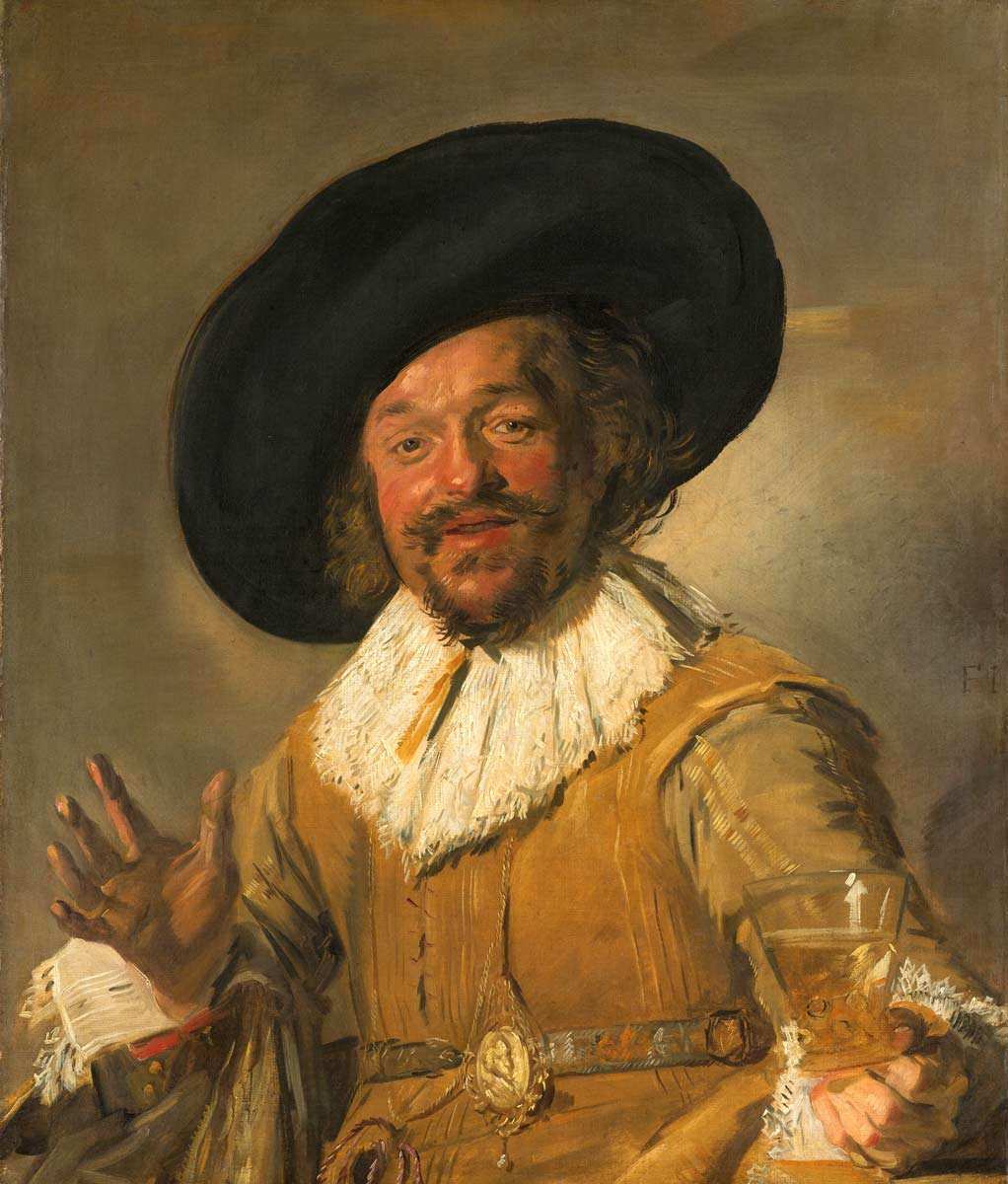
Overall, the misattribution of paintings is something that is seen often with works of art. It is essential for art institutions to highlight when the authorship of an item is in question. It is possible that the number of women artists from the seventeenth century whose work has been misattributed is much larger than we think.

By Tyla Jade WhiteleyMSc Global Premodern Art, BA (Hons) History of ArtTyla Jade is an art historian who holds an MSc in Global Premodern Art: History, Heritage and Curation from the University of Edinburgh and a BA in History of Art from the University of Plymouth. Based in London, Tyla Jade has previously worked in art galleries as well as assisted with lectures for Utrecht’s Summer School in The Netherlands. She is passionate about research and enjoys writing about varied art historical topics. Also, she enjoys travelling and learning about different cultures from around the world.


